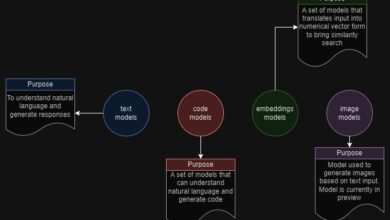What is Prompt Engineering and Why It Might Be Your Next Career Path
Introduction to Prompt Engineering for Artificial Intelligence Engines
Artificial Intelligence (AI) has transformed our daily lives, powering voice assistants, chatbots, image generation, self-driving cars, and medical diagnosis. However, developing AI models that can efficiently and accurately perform a wide range of tasks remains a challenge. This is where prompt engineering comes into play.
Chatbots and AI models like ChatGPT and OpenAI have gained immense popularity. But training these models to excel in various tasks requires prompt engineering. This technique involves refining the input data used to train the models, ensuring optimal performance, accuracy, and efficiency. In this article, we explore prompt engineering and its application in improving the performance of chatbots and AI models like ChatGPT and OpenAI.
I, like millions of others, have been captivated by AI tools such as ChatGPT, OpenAI, MidJourney, and GitHub CoPilot. However, I have noticed that as I enhance my prompt engineering skills, the quality of results improves significantly. This realization highlights the challenge faced by ordinary individuals and businesses that seek AI-based solutions to enhance their operations.
What is Prompt Engineering?
Prompt engineering can be categorized into two areas: crafting queries for existing AI models like OpenAI or MidJourney, and the engineering involved in building and training the models. Both areas will experience a surge in demand for professionals who can effectively help businesses leverage the potential of AI for internal tools, products, and services.
Crafting prompts for AI models like OpenAI requires a blend of technical and creative skills. You need to compose questions, statements, or instruction sets tailored to AI tools like ChatGPT. Key skills for prompt engineering include:
-
Understanding of AI and machine learning concepts: To craft effective prompts, a strong grasp of AI and machine learning principles such as neural networks, natural language processing, and deep learning is required.
-
Knowledge of the specific AI model: To craft effective prompts, you should be well-versed in the specific AI model you are working with, such as OpenAI’s GPT-3 or GPT-2. This involves understanding the model’s architecture, training data, and any notable features or capabilities.
-
Familiarity with the task or application: To craft effective prompts, you need a deep understanding of the task or application for which the AI model is used. This includes knowledge of the specific domain, the type of data being used, and the desired outcome.
-
Technical skills: To craft effective prompts, proficiency in technical skills required for working with AI models is crucial. This includes programming, data preprocessing, and feature engineering.
-
Creative skills: Craft effective prompts demands creative skills like thinking outside the box, generating novel ideas, and developing innovative approaches.
-
Communication skills: Effective prompts require strong communication skills to clearly convey the inputs and desired outputs to the AI model.
-
Analytical skills: Effective prompts necessitate the ability to analyze and interpret AI model results, identifying areas for improvement or any potential issues.
Overall, crafting effective prompts for AI models like OpenAI relies on a combination of technical and creative skills, as well as deep knowledge of the specific model and the intended task or application.
Prompt Engineering for Building Custom Machine Learning/AI Models
Prompt engineering, on a more technical level, involves fine-tuning the input data used to train AI models. It includes selecting and structuring the input data to maximize its usefulness in model training. Techniques like data preprocessing, feature selection, and data augmentation fall under prompt engineering. These techniques enhance the performance of AI models by providing them with high-quality input data.

Prompt engineering proves particularly valuable when there is limited data available. For instance, in the case of medical imaging, gathering a vast amount of data may be impractical due to ethical or logistical constraints. Prompt engineering enables making the most of limited data by carefully selecting and structuring it to optimize model training.
To put data size in perspective, OpenAI was trained on 45 billion documents, and MidJourney utilized over 4 billion images. Compared to these massive datasets, highly specialized AI models like medical imaging work with relatively smaller samples, especially those owned by businesses and not sourced from the public domain.
How Does Prompt Engineering Improve the Performance of AI Models?
Prompt engineering heightens AI models’ performance by providing them with high-quality input data. Various techniques, such as data preprocessing, feature selection, and data augmentation, contribute to this improvement.
Data preprocessing involves cleaning and transforming input data before model training. Techniques like removing outliers, filling missing values, and normalizing data enhance the model’s performance by providing cleaner and more consistent input data.
Feature selection entails picking the most relevant features from the input data for model training. Techniques like feature extraction, reduction, and selection ensure more focused input data, thereby elevating the model’s performance.
Data augmentation deals with artificially increasing the available data for model training. Techniques like image rotation, flipping, zooming, and adding noise introduce diversity in the data, enhancing the model’s performance.
The Role of Prompt Engineering in AI Development
Prompt engineering plays a critical role in AI development by providing models with high-quality input data. The technique improves model performance, making them more accurate and efficient.
Prompt engineering proves especially beneficial in situations with scarce data. By meticulously selecting and structuring data, the technique maximizes the potential of the limited available data, thus enhancing model performance.
Prompt engineering can also be employed to improve the performance of pre-trained models by fine-tuning the input data used for their training. This involves applying prompt engineering techniques such as data preprocessing, feature selection, and data augmentation to the new dataset, through transfer learning.
Prompt engineering plays a crucial role in building robust AI models capable of performing effectively in real-world scenarios. Careful selection and structuring of input data empower models to handle a diverse range of inputs, even in the presence of noise and variability.
Conclusion
Prompt engineering is a powerful technique for improving AI models’ performance by providing them with high-quality input data. It encompasses techniques like data preprocessing, feature selection, and data augmentation. Prompt engineering enables making the most of limited data while building accurate and efficient models. Considering prompt engineering is fundamental for AI developers when crafting models.
Prompt engineering is an essential aspect of AI development, contributing to the creation of accurate and efficient models that excel in real-world scenarios. Meticulous selection and structuring of input data empower models to handle diverse inputs and perform effectively.




